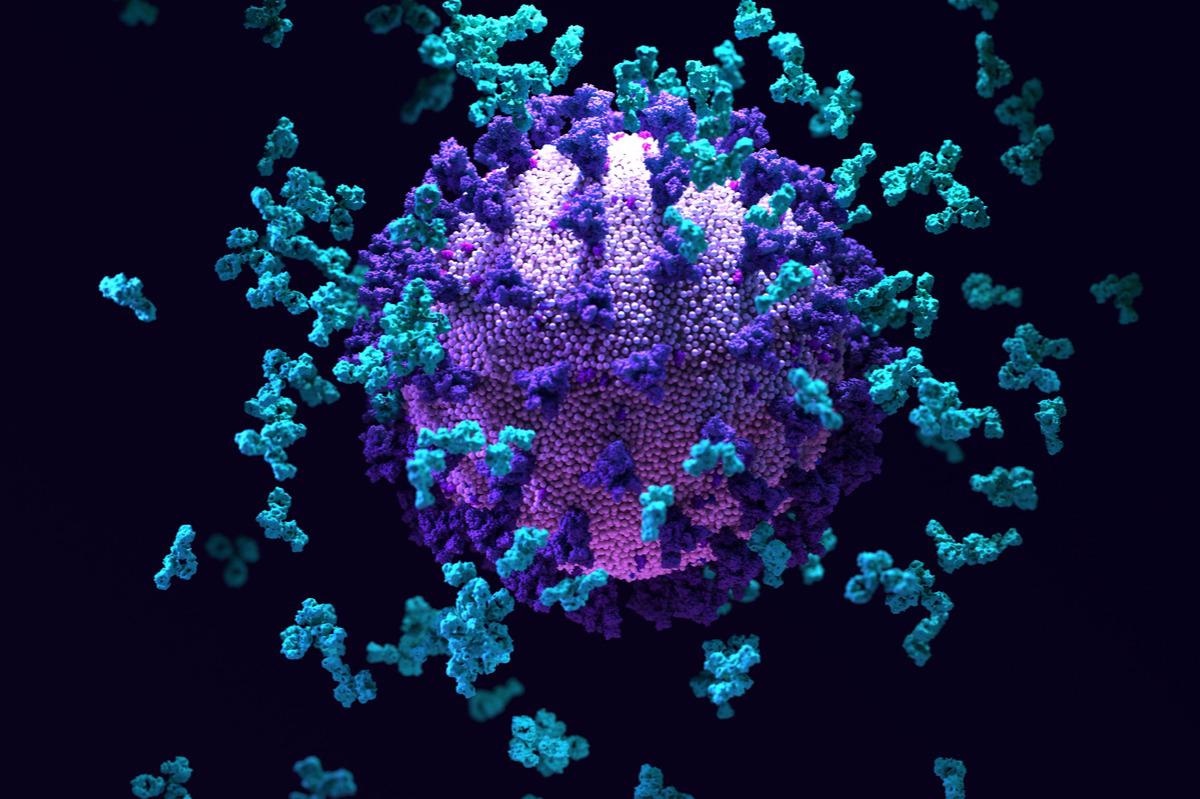In a recent study posted to the bioRxiv* pre-print server, researchers investigated the effect of repeated alcohol exposure and withdrawal on angiotensin-converting enzyme 2 (ACE2) and transmembrane serine protease 2 (TMPRSS2) expression, putative regulators of severe acute respiratory syndrome coronavirus 2 (SARS-CoV-2) entry, in discrete brain regions.

There is growing evidence suggesting a higher risk of SARS-CoV-2 infection among people with substance use disorders (SUD), including alcohol use disorders (AUDs); however, whether or not AUD confers an additional risk of SARS-CoV-2-related neurological complications is unknown.
Studies have shown an upregulated ACE2 and TMPRSS2 expression in the brain cortex of individuals with AUD. Accordingly, the ACE2 expression pattern and density can accentuate the risk of SARS-CoV-2 neuroinvasion. However, data explicitly showing enhanced ACE2 and TMPRSS2 expression in other brain regions and neural populations, particularly monoaminergic neurons, is limited.
About the study
In the present study, researchers exposed the C57BL/6J mice to chronic intermittent ethanol (CIE) vapor for four weeks and then examined their brains using immunofluorescence. They measured ACE2 and TMPRSS2 levels in then monoaminergic neurons and associated brain nuclei.
They stabilized blood ethanol concentration (BECs) in mice using an alcohol dehydrogenase inhibitor, pyrazole. The daily dosage of pyrazole injected intraperitoneally (i.p.) was 1 mmol/kg. The team also injected a loading dose of 1.57 g/kg ethanol (EtOH) immediately before placing mice in vapor chambers.
The test animal group (CIE group) received CIE vapor for 16 hours every day, followed by an eight-hour withdrawal period for four consecutive days. This CIE exposure continued for four weeks before the researchers perfused mice for brain harvesting. Likewise, they exposed mice in the control group (Air group) to only room air but injected them with pyrazole.
The researchers collected the brain regions of interest (ROI), including the olfactory bulb (OB), amygdala (AMY), thalamus (TH), hypothalamus (HT), hippocampus (HP), dorsal raphe nucleus (DRN), and a few more from a separate group of mice. They isolated and quantified the total ribonucleic acid (RNA) from brain ROI using quantitative reverse transcription-polymerase chain reaction (RT-qPCR).
Further, they quantified the ACE2 expression across specific brain regions using standard immunofluorescence methods. They used the Just Another Colocalization plugin (JACoP) in the Image J software to compute the degree of immuno-colocalization between the ACE2 and neuronal markers. They represented the results for the Pearson correlation coefficient (PCC) and Mander’s overlap coefficient (MOC) as the standard error of the mean (± SEM) values.
Study findings
Following the CIE exposure, the authors observed an increased ACE2 expression in the OB, HT, and monoaminergic brainstem regions of mice. This elevated ACE2 expression potentially accentuated the severity of SARS-CoV-2 infection and the risk of neuroinvasion. Interestingly, the ACE2 expression increased in the periaqueductal gray (PAG), the brainstem region involved in autonomous functions such as breathing, and decreased in the AMY, a brain region connected to anxiety and stress-related disorders.
While the observed altered TMPRSS2 expression was primarily present in the OB and DRN brain regions, the increased ACE2 expression after the CIE exposure was prevalent across most brain regions, reinforcing a higher risk for SARS-CoV-2 infection in individuals with AUD. In this context, the authors highlighted that the decreased ACE2 expression in the TH following CIE exposure could be due to shrinkage of the TH, suggesting that the TH might have undergone significant remodeling after SARS-CoV-2 infection.
Furthermore, the authors found elevated total ACE2 immunoreactivity in the raphe obscurus (ROB), raphe magnus (RMG), and locus coeruleus (LC). Additionally, they observed an increased colocalization of monoaminergic neurons with the ACE2.
The researchers also detected differential levels of two ACE2 isoforms in most brain regions; likewise, they detected TMPRSS2 expression in all the brain regions, but its messenger RNA (mRNA) was below detection limits in most brain regions. It is worth noting here that ACE2 exists as a soluble catalytic ectodomain (sACE2) in the cerebrospinal fluid (CSF). Thus, high levels of sACE2 in brain regions such as the OB suggest mechanisms for SARS-CoV-2 propagation within the brain.
Conclusions
Taken together, the study findings revealed that chronic alcohol exposure and withdrawal might increase the risk of SARS-CoV-2 infection and perpetual neuroinvasion. It also highlighted that its impact would be the highest in brain circuits involved in cardiovascular, respiratory function, and emotional processing. However, further research is needed to establish a direct correlation between alcohol-dependent changes in the ACE2 levels and their impact on CNS invasion, COVID-19 severity, and the prevalence of neurological symptoms.
*Important notice
bioRxiv publishes preliminary scientific reports that are not peer-reviewed and, therefore, should not be regarded as conclusive, guide clinical practice/health-related behavior, or treated as established information.
- Nagalakshmi Balasubramanian, Thomas D James, Selvakumar Govindhasamy Pushpavathi, Catherine A Marcinkiewcz. (2022). Repeated ethanol exposure and withdrawal alters ACE2 expression in discrete brain regions: Implications for SARS-CoV-2 infection. bioRxiv. doi: https://doi.org/10.1101/2022.03.29.486282 https://www.biorxiv.org/content/10.1101/2022.03.29.486282v1
Posted in: Medical Science News | Disease/Infection News | Healthcare News
Tags: ACE2, Alcohol, Amygdala, Angiotensin, Angiotensin-Converting Enzyme 2, Anxiety, Blood, Brain, Breathing, Chronic, Coronavirus, Coronavirus Disease COVID-19, Cortex, covid-19, Enzyme, Ethanol, Hippocampus, Hypothalamus, Locus, Neurons, Polymerase, Polymerase Chain Reaction, Propagation, Research, Respiratory, Ribonucleic Acid, RNA, SARS, SARS-CoV-2, Serine, Severe Acute Respiratory, Severe Acute Respiratory Syndrome, Stress, Syndrome, Thalamus, Transcription

Written by
Neha Mathur
Neha is a digital marketing professional based in Gurugram, India. She has a Master’s degree from the University of Rajasthan with a specialization in Biotechnology in 2008. She has experience in pre-clinical research as part of her research project in The Department of Toxicology at the prestigious Central Drug Research Institute (CDRI), Lucknow, India. She also holds a certification in C++ programming.
Source: Read Full Article
